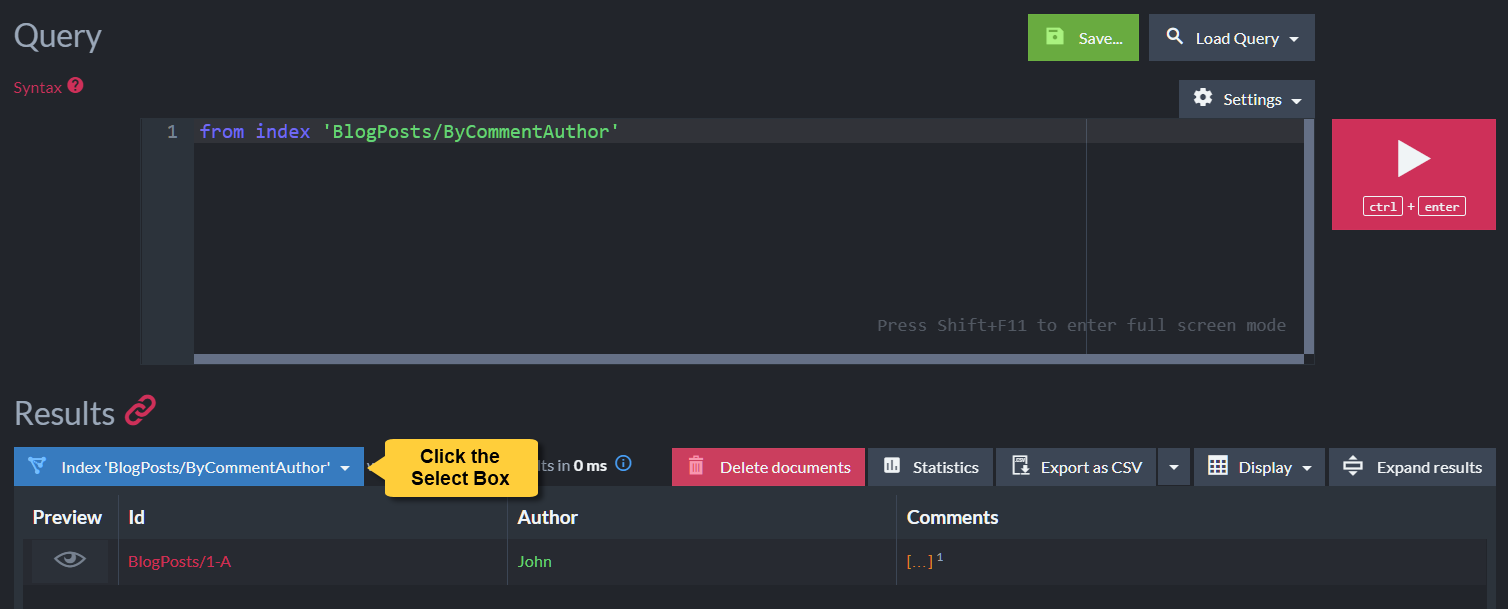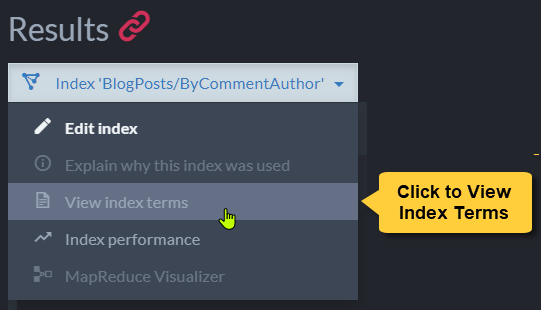Indexes: Indexing Hierarchical Data
Use the indexing Recurse method to recurse through the layers of a hierarchical document
and index its elements.
- In this Page:
Hierarchical Data
One of the significant advantages offered by document databases is their tendency not to force
limits upon data structuring. Hierarchical data structures demonstrate this quality beautifully:
take, for example, the commonly-used Comment thread, implemented using objects such as:
private class BlogPost
{
public string Author { get; set; }
public string Title { get; set; }
public string Text { get; set; }
// Blog post readers can leave comments
public List<BlogPostComment> Comments { get; set; }
}
public class BlogPostComment
{
public string Author { get; set; }
public string Text { get; set; }
// Comments can be left recursively
public List<BlogPostComment> Comments { get; set; }
}Readers of a post created using the above BlogPost structure, can add BlogPostComment comments
to its Comments field. And readers of these comments can reply with comments of their own, creating
a recursive hierarchical structure.
BlogPosts/1-A, for example, is a blog entry posted by John, that contains several layers of
comments left by various authors.
BlogPosts/1-A:
{
"Author ": "John",
"Comments": [
{
"Author": "Moon",
"Comments": [
{
"Author": "Bob"
},
{
"Author": "Adel",
"Comments": {
"Author": "Moon"
}
}
]
}
],
"@metadata": {
"@collection": "BlogPosts"
}
}
Indexing Hierarchical Data
To index the elements of a hierarchical structure like the one demonstrated above,
use RavenDB's Recurse method.
In the sample below, we use Recurse to go through comments in the post thread
and index them by their authors.
private class BlogPosts_ByCommentAuthor :
AbstractIndexCreationTask<BlogPost, BlogPosts_ByCommentAuthor.Result>
{
public class Result
{
public IEnumerable<string> Authors { get; set; }
}
public BlogPosts_ByCommentAuthor()
{
Map = blogposts => from blogpost in blogposts
let authors = Recurse(blogpost, x => x.Comments)
select new Result
{
Authors = authors.Select(x => x.Author)
};
}
}store.Maintenance.Send(new PutIndexesOperation(
new IndexDefinition
{
Name = "BlogPosts/ByCommentAuthor",
Maps =
{
@"from blogpost in docs.BlogPosts
from comment in Recurse(blogpost, (Func<dynamic, dynamic>)(x => x.Comments))
select new
{
Author = comment.Author
}"
}
}));public class BlogPosts_ByCommentAuthor_JS : AbstractJavaScriptIndexCreationTask
{
public class Result
{
public string[] Authors { get; set; }
}
public BlogPosts_ByCommentAuthor_JS()
{
Maps = new HashSet<string>
{
@"map('BlogPosts', function (blogpost) {
return recurse(blogpost, x => x.Comments).map(function (comment) {
if (comment.Author != null) {
return {
Authors: comment.Author
};
}
});
});"
};
}
}Querying the created index
-
The index we created can be queried using code.
IList<BlogPost> results = session .Query<BlogPosts_ByCommentAuthor.Result, BlogPosts_ByCommentAuthor>() .Where(x => x.Authors.Any(a => a == "John")) .OfType<BlogPost>() .ToList();IList<BlogPost> results = session .Advanced .DocumentQuery<BlogPost, BlogPosts_ByCommentAuthor>() .WhereEquals("Authors", "John") .ToList(); -
The index can also be queried using Studio.
-
Use Studio's List of Indexes view to define and query the index.

List of Indexes view
-
Use the Query view to see the results and the list of terms indexed by the
Recursemethod.
Query View

Click to View Index Terms

Index Terms
-